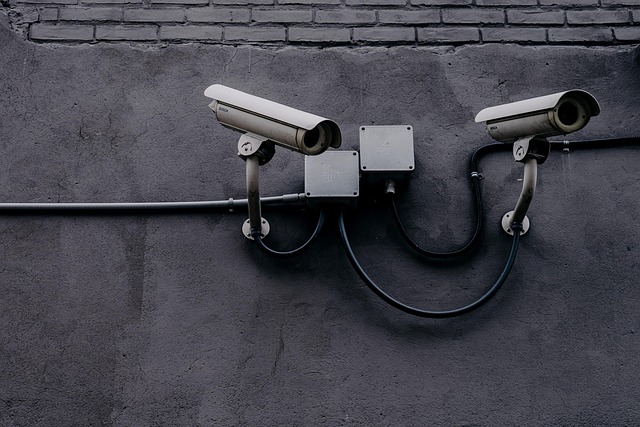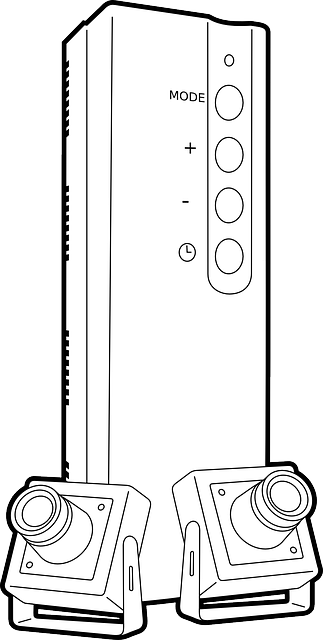Home surveillance systems, encompassing both wireless and wired technologies, offer enhanced security and peace of mind. Wireless cameras provide remote access and flexibility via mobile devices, while wired systems deliver high-quality video and reliable performance. Combining these approaches offers a hybrid solution tailored to diverse home needs, ensuring comprehensive coverage with advanced features. Regular maintenance, including inspections and troubleshooting common issues, is crucial for optimal system functionality.
Home surveillance has evolved, offering both wireless and wired camera systems as essential tools for modern homeowners. This article guides you through the intricacies of these technologies, highlighting their unique benefits. From the flexibility of wireless setups to the robust security of wired networks, we explore how to choose and set up the perfect system. Learn about integration strategies and essential maintenance tips to ensure optimal performance. Discover the ultimate in home surveillance with our comprehensive overview.
- Understanding Home Surveillance: The Need for Wireless and Wired Camera Systems
- Advantages of Wireless Camera Systems for Home Security
- Setting Up a Reliable Wired Camera Network at Home
- Integrating Both: Combining Wireless and Wired Cameras for Comprehensive Home Surveillance
- Maintenance and Troubleshooting Tips for Optimal Performance
Understanding Home Surveillance: The Need for Wireless and Wired Camera Systems

Home surveillance is an essential aspect of modern home security, offering peace of mind and advanced protection against potential threats. With the ever-evolving landscape of home technology, wireless and wired camera systems have become pivotal tools for homeowners seeking comprehensive security solutions. These systems provide a multi-layered approach to monitoring and securing one’s abode, addressing various concerns from unauthorized entries to environmental hazards.
Wireless cameras, with their seamless connectivity and flexibility, allow for remote access and real-time monitoring via mobile devices, offering convenience and accessibility like never before. On the other hand, wired camera systems provide robust performance, high-quality video transmission, and reliable connectivity, making them ideal for critical security applications. Understanding the unique advantages of each system is crucial when selecting a home surveillance solution that aligns with individual needs and preferences.
Advantages of Wireless Camera Systems for Home Security

Wireless camera systems have transformed home security, offering numerous advantages over traditional wired setups. One of the key benefits is convenience and flexibility. With wireless technology, cameras can be easily placed anywhere in your home without the hassle of running complex cables through walls or floors. This freedom allows for a more comprehensive coverage, ensuring blind spots are minimized. For instance, you can install cameras in hard-to-reach corners, attics, or even outdoors to monitor your property effectively.
Additionally, wireless cameras provide enhanced mobility and remote access. Homeowners can view live feeds and receive alerts from their smartphones or tablets, enabling them to stay connected to their home surveillance system on the go. This real-time monitoring is a significant step up from wired systems, where access often requires physical proximity to the camera’s base station. The ease of installation and management makes wireless camera systems an attractive option for those seeking modern, efficient home security solutions.
Setting Up a Reliable Wired Camera Network at Home

Setting up a reliable wired camera network at home for home surveillance is a straightforward process that offers unparalleled peace of mind. Begin by selecting high-quality cameras designed for indoor use, with clear resolution and night vision capabilities. Next, map out your desired placement, ensuring each camera has a clear line of sight to the areas you wish to monitor. Once positioned, connect each camera to your home network using high-speed Ethernet cables.
For optimal performance, prioritize running these cables discreetly through walls or floors, avoiding visible bundles that could compromise aesthetics. A reliable switch or router will then allow for centralized management and seamless data transfer between all connected cameras. This setup provides a robust foundation for your home surveillance system, delivering clear video feeds and secure data transmission 24/7.
Integrating Both: Combining Wireless and Wired Cameras for Comprehensive Home Surveillance

In today’s world, home surveillance systems are evolving to meet the diverse needs of homeowners. Integrating both wireless and wired camera systems offers a comprehensive solution that leverages the strengths of each technology. Wired cameras excel in providing reliable, high-bandwidth connections for crystal-clear video streaming, essential for detailed monitoring and evidence collection. On the other hand, wireless cameras offer unparalleled flexibility and ease of installation, allowing you to place them virtually anywhere without the hassle of running cables.
Combining these two approaches lets homeowners enjoy the best of both worlds: robust, high-fidelity surveillance where it matters most, along with the convenience and adaptability of wireless technology. This hybrid setup can be tailored to fit various home layouts and security requirements, ensuring you have complete control over your property 24/7.
Maintenance and Troubleshooting Tips for Optimal Performance

Maintaining your home surveillance system is essential for ensuring optimal performance and reliable protection. Regularly inspect all cameras, both wired and wireless, for any signs of damage or debris. Clean lenses gently with a soft cloth to maintain clear imagery. Check connections at both ends of cables—especially in wired systems—ensuring secure attachment to avoid signal loss. For wireless setups, verify signal strength and ensure there are no obstructions between the camera and receiver.
Troubleshooting common issues can be straightforward. If footage is pixelated or distorted, try repositioning cameras or clearing nearby obstacles. For intermittent connectivity, check power sources, especially in battery-powered wireless cameras, ensuring they’re fully charged. In wired systems, verify that all connectors are secure and clean. If issues persist, consult the system’s user manual for troubleshooting guides specific to your model, or reach out to technical support for expert assistance.
In today’s digital era, ensuring robust home surveillance is paramount. By understanding the distinct advantages of both wireless and wired camera systems, homeowners can create a comprehensive security network tailored to their needs. Wireless cameras offer flexibility and ease of installation, while wired systems provide reliable, high-quality video transmission. Integrating these two technologies allows for a resilient, adaptable home surveillance solution, enhancing peace of mind and security. Regular maintenance and troubleshooting ensure optimal performance, keeping your home safe and secure around the clock.
